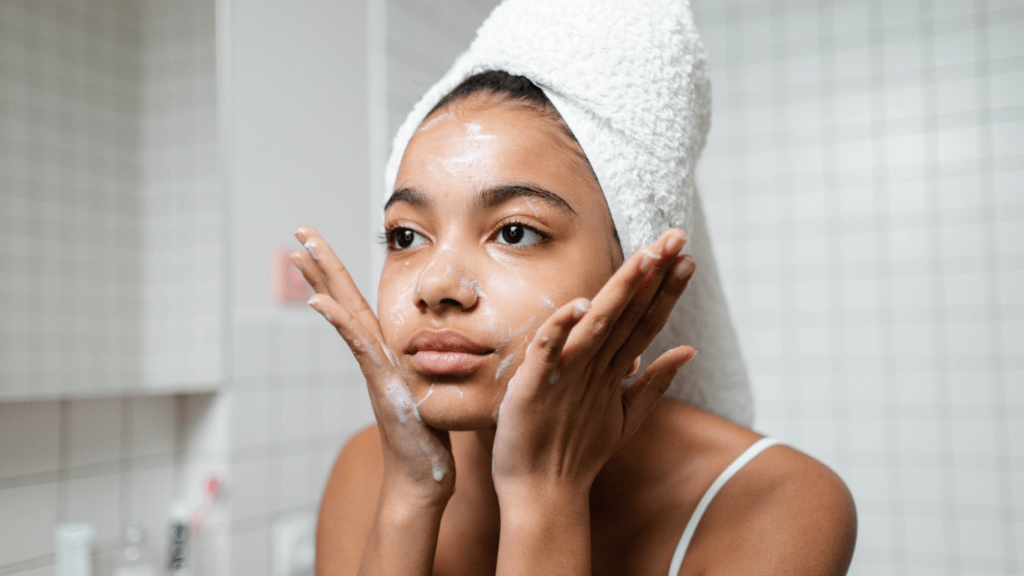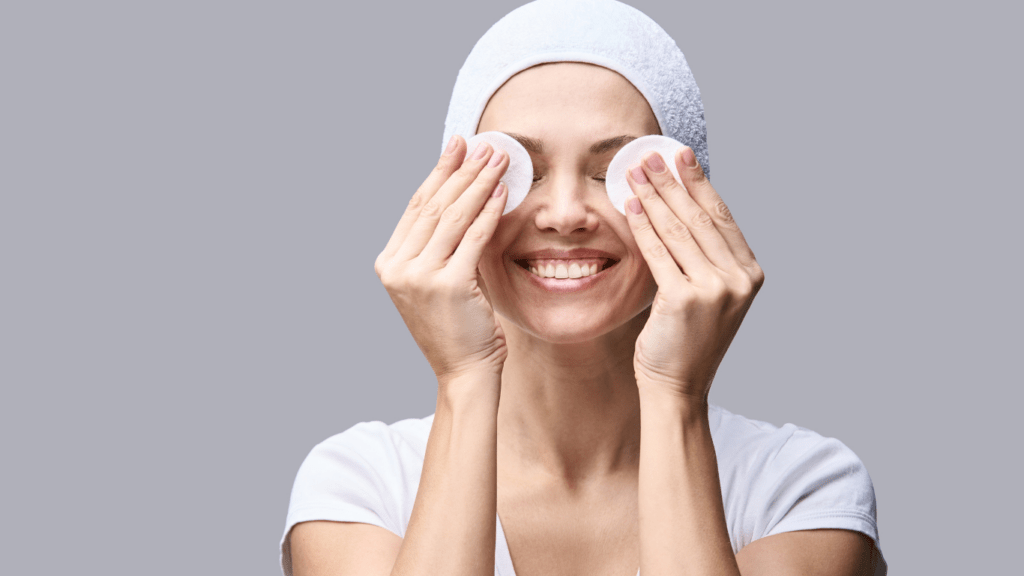Understanding Double Cleansing
Double cleansing enhances skincare routines by providing a thorough clean that other methods often miss. I’ll explore what double cleansing is and its origins for those new to the concept.
What Is Double Cleansing?
Double cleansing involves using two types of cleansers to clean your face. First, you use an oil-based cleanser to remove makeup, sunscreen, and excess sebum.
Oil-based cleansers effectively break down these substances, something water-based cleansers struggle with. After that, a water-based cleanser is used to remove any remaining impurities and deep clean pores. This two-step process ensures a more profound clean.
Origins of Double Cleansing
Double cleansing’s roots trace back to Korea and Japan. This method has long been a staple in Korean skincare routines. Korean women prioritize clear, luminous skin, and double cleansing is a fundamental step in achieving that goal.
Japan also has a rich history with this technique, where geishas were known to use oils to remove heavy makeup before cleansing with soap. These traditions have significantly influenced global skincare practices and popularized double cleansing in the West.
The Benefits of Double Cleansing

Double cleansing offers numerous benefits for the skin, making it a popular choice for skincare enthusiasts. It not only ensures thorough cleansing but also enhances the skin’s overall health and appearance.
Improved Skin Texture
Double cleansing removes makeup and environmental impurities, effectively preparing the skin for subsequent products. By eliminating buildup, it promotes smoother skin.
A 2018 study in the “Journal of Cosmetic Dermatology” found that participants experienced significant improvements in skin texture after adopting a double-cleansing routine.
Better Makeup Removal
Oil-based cleansers dissolve makeup and sunscreen more effectively than water-based options alone. When followed by a water-based cleanser, it ensures that all residues are washed away.
For instance, products like waterproof mascara and long-wear foundation require oil-based solutions for optimal removal, making double cleansing essential for a thorough cleanse.
Reduced Acne and Breakouts
Removing excess sebum and impurities through double cleansing minimizes clogged pores. According to a 2017 study published in the “International Journal of Dermatology,” individuals with acne-prone skin saw reduced breakouts when they adopted double cleansing.
Combining oil and water-based cleansers assists in maintaining clearer, healthier skin by addressing both surface-level and deep-seated impurities.
Step-by-Step Guide to Double Cleansing
Double cleansing involves two key steps to achieve clean and refreshed skin. Here’s how to do it effectively.
Choosing the Right Products
Selecting the appropriate products is crucial for double cleansing. Use an oil-based cleanser for the first step to remove makeup and impurities. Options include cleansing oils, balms, or micellar water.
For the second step, use a water-based cleanser to clean the skin thoroughly. Choose a gentle foaming cleanser, gel, or cream based on your skin type. Look for labels indicating “non-comedogenic” to prevent clogged pores. Ensure both products are free from harsh chemicals and fragrances to avoid irritation.
How to Double Cleanse Properly
Follow these steps to double cleanse effectively:
- Remove Makeup: Start with an oil-based cleanser. Apply it to dry skin, gently massaging in circular motions for about 1-2 minutes.
- Rinse Thoroughly: Use lukewarm water to rinse off the oil-based cleanser, making sure to remove all traces.
- Cleanse Again: Apply a small amount of water-based cleanser to damp skin. Massage gently for another minute, focusing on areas prone to oil or congestion.
- Rinse and Pat Dry: Rinse off the water-based cleanser completely with lukewarm water. Pat your face dry with a soft, clean towel, avoiding any harsh rubbing.
Each step ensures your skin is free from makeup, dirt, and impurities, leaving it ready for moisturizing and other skincare products.
Potential Drawbacks
While double cleansing offers many skincare benefits, it’s essential to consider some potential drawbacks to determine if it’s right for your routine.
Over-Cleansing Concerns
Over-cleansing can strip the skin of its natural oils. If skin feels tight and dry after cleansing, this might indicate over-cleansing. According to dermatologists, excessive removal of natural oils can lead to an increase in oil production, causing breakouts and oily skin.
Skin Sensitivity Issues
Double cleansing might aggravate sensitive skin. If skin tends to react to new products, be cautious with this method. Potential issues include redness, irritation, and dryness, especially if using harsh cleansers. Consulting a dermatologist can provide personalized recommendations and alternatives.
Is Double Cleansing Right for You?
Determining if double cleansing suits you depends on several factors. Your skin type and skincare goals are crucial to making this decision.
Assessing Your Skin Type
Different skin types require varied care. Oily and combination skin types, for example, benefit most from double cleansing due to excess sebum and potential clogged pores.
An oil-based cleanser dissolves sebum while a water-based cleanser removes impurities. For dry or sensitive skin types, caution can be necessary. Double cleansing, if not done correctly, strips natural oils, worsening dryness or causing irritation. Opt for gentler, hydrating cleansers to mitigate these effects. Always test new products on a small skin area to ensure compatibility.
Considering Your Skincare Goals
Clear skincare objectives help in deciding whether to adopt double cleansing. For instance, if you aim to remove heavy makeup or sunscreen effectively, double cleansing excels in breaking down these layers, providing a thorough cleanse.
Those targeting acne reduction, smoother skin, and improved texture might find double cleansing beneficial due to its ability to eradicate pore-clogging impurities. On the other hand, if your goal is to maintain balanced moisture levels without deep cleaning or you’re managing a specific skin condition, simpler routines could suffice. Tailor your approach based on what you seek to achieve for optimal results.


 Bonnie Brown is an expert in holistic wellness with over a decade of experience in natural health and skincare. She has dedicated her career to helping individuals achieve radiant health through plant-based solutions and mindful self-care practices. Bonnie is passionate about blending ancient traditions with modern wellness techniques, making her insights a valuable resource for anyone on a journey to healthier skin and overall well-being.
Bonnie Brown is an expert in holistic wellness with over a decade of experience in natural health and skincare. She has dedicated her career to helping individuals achieve radiant health through plant-based solutions and mindful self-care practices. Bonnie is passionate about blending ancient traditions with modern wellness techniques, making her insights a valuable resource for anyone on a journey to healthier skin and overall well-being.
